The players are undeniably a crucial part of your game. The rules and the setting – indispensable. But let’s be honest – your game definitely couldn’t happen without your Control / Facilitator Team.
The term “Control” is usually used to refer to the team of people that help you to run your game. They may be managing a team, assisting with a mechanic, operating a shop, keeping trackers up-to-date, structuring the plot, or any of countless other tasks. Other terms have been used in the past, such as Umpires or Facilitators, or even game specific terms such as Ship AI or Cabin Hand. Throughout this post, I’m going to use Facilitators.
Let’s take a look at how to structure your Facilitator Team and what role they play in making your game a success.
What do Facilitators do?
Fundamentally, Facilitators facilitate the functions of your game. In a tabletop RPG, think of the GM, and in LARP it’s the Crew. In a board game, the players are usually the Facilitators.
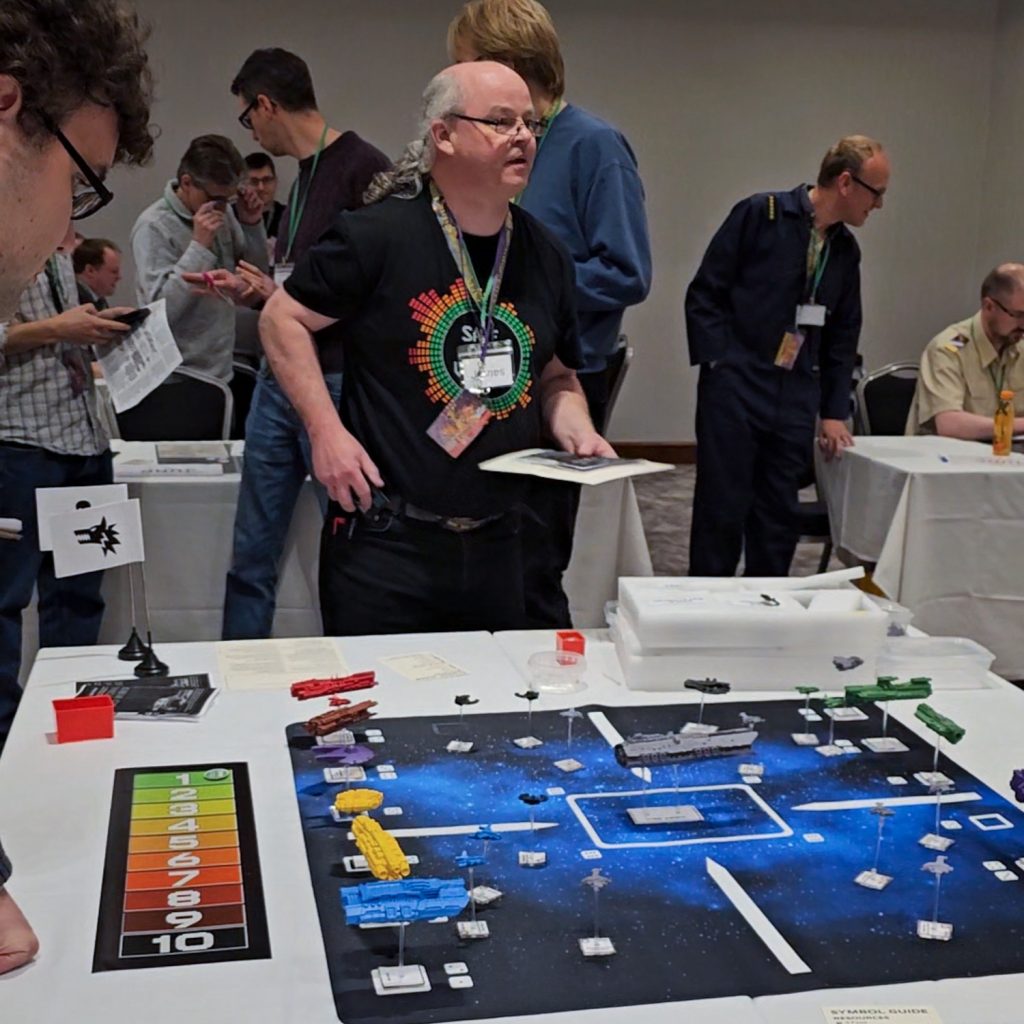
One of the functions of Facilitators is that it allows megagames to be more open-world than a board game. In Pandemic, if the players decide they want to introduce a law to give them more funding for the virus efforts, there’s not a way for them to do that. In a megagame, there usually is.
Types of Facilitator
I’ve identified 7 different types of Facilitator, although there may be more.
Mechanics Facilitators
These are your Map Facilitators, Trade Facilitators, Science Facilitators – basically, anyone responsible for ensuring that a mechanic that the Game Designer created gets run correctly by the players. Most megagame mechanics are designed to be operated mostly by the players, but these Facilitators are there to assist in early turns, answer questions, make judgement calls, and sometimes feedback responses to the rest of the game. Pretty much all games will have at least a few Mechanic Facilitators.

Plot Facilitators
Whether it’s the overarching plot, or just a smaller aspect thereof, these Facilitators are responsible for binding the plot together, ensuring consistency in resolving improv play (or Wizard Wheezes) and creating a coherent narrative for the game (as far as possible). They may be responsible for secret plots, character backstories and quests. Some games will have these in addition to Team Facilitators, whereas some will only have one or the other.
Team Facilitators
These Facilitators “own” a team, or other subset of players, within the game. They are there to be the first port-of-call, resolve any team specific mechanics (such as income or prestige), manage intra-team plots, add story inserts, or anything else that relates to a specific team. They may also assist with mechanical elements for teams, such as dispensing resources at the start of a turn. These are not always present in every game, and sometimes they may be split across several teams. In some circles, these are falling out of use in favour of floating Plot Facilitators.
In some games, you will have a sort of hybrid control type that merges aspects of Mechanics, Plot and Team Control, such as Alien Control at Watch The Skies.
Non Player Character (NPC) Facilitator
Similar to a Plot Facilitator, this Facilitator takes on the role of any non-played entities in the game world. Depending on the game, that may be neighbouring countries or star systems, unplayed religious factions or other nobles with strong opinions. They may casually be called Plumpires (Player-Umpires).
An NPC Facilitator will often wear many different hats (sometimes literally!) over the course of the day, but in some games they will be playing a specific NPC, such as Aerys Control at my Everybody Dies megagame. The Mad King was a key part of the setting, but for game balance couldn’t be done by a player.
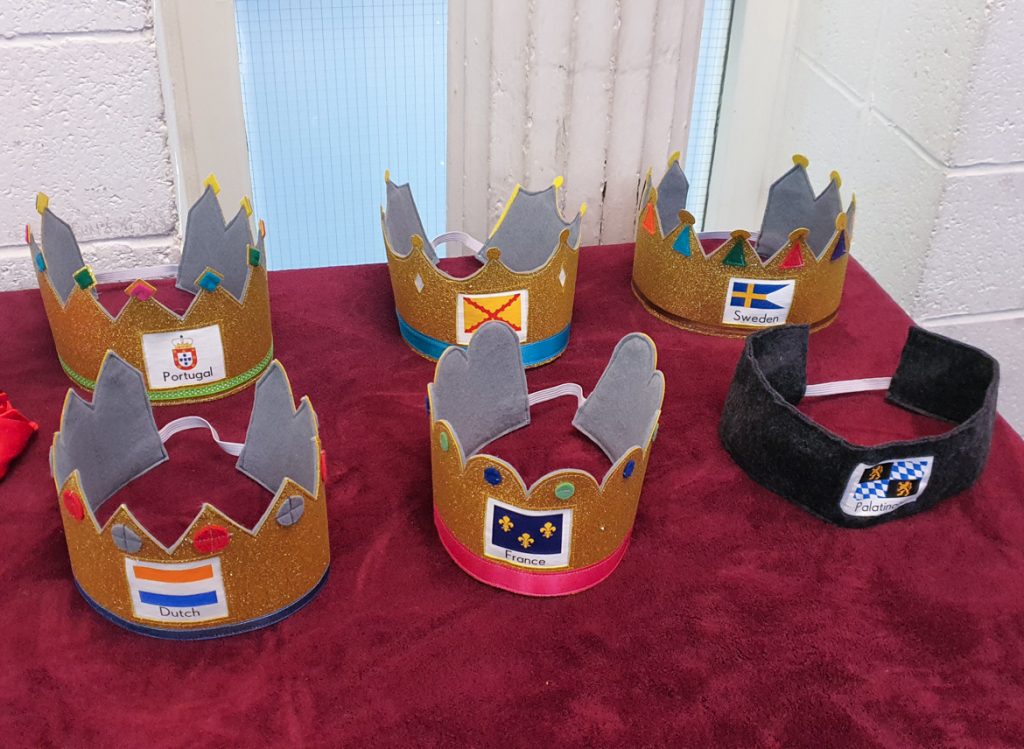
New Player Liaison
This person’s purpose is to assist players who are at their first game, or who have only been to a handful of games. They will be ensuring the newer players understand the game rules, that they know how to participate in the game as fully as possible, and support them if they feel confused or overwhelmed. For more, read Ten things you might not be doing at your Megagame.
Liaison Facilitator
Not to be confused with New Player Liaison. With similarities to a Mechanics Facilitator, this role is often found in larger games to help manage information flow across the game. They can be especially useful for games running in multiple rooms, or with busy mechanics that need filtering out to the wider game.
Game Control / Lead Facilitator
This person is usually the designer of the game. They know the game inside out, and often any very important judgement calls are taken to them. They usually should not have any formal responsibilities within the game, but should be available to resolve important in- and out-of-game issues.
At larger games, you may also find an Assistant Game Control who is also expected to be au fait with as much of the game as possible. They act as a floating control who can support any particular part of the game that needs additional focus, such as a mechanic that gets exceptionally busy, an in-game situation that arises needing arbitration, or even stepping in for a Facilitator that needs to leave unexpectedly.

Structuring your Facilitator Team
There are two factors here – how many Facilitators, and what they are doing.
Deciding how many Facilitators your game needs is a finely balanced task. You want enough that your team are not overworked and that players can speak to one immediately when they need to, or at least soon. You don’t want so many that they are bored – Facilitators are usually volunteers, and it can be hard to recruit large numbers of them, particularly for first-time runs of games.
A good starting point is to look at the different parts of the game that will be running simultaneously and how many people they need to ensure it runs smoothly. If you have one small map, you may be fine with a single Map Facilitator; if you have five spread across a large room, players may be frustrated if there isn’t one assigned to each map. Similarly, are players going to be spending a lot of time speaking to their teams, or will they be floating around the room more – this could help you choose between Team and Plot Facilitators.
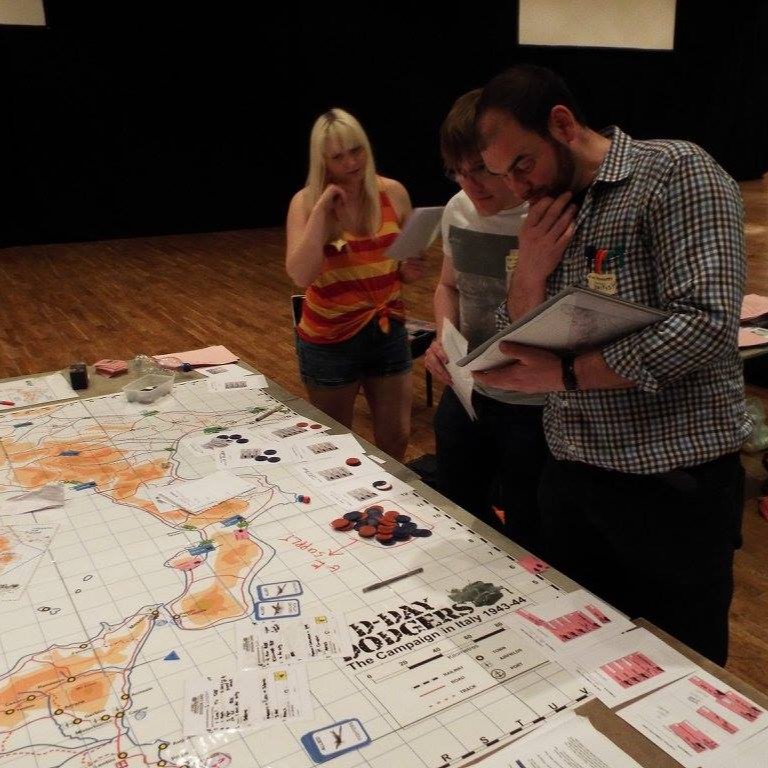
In modern megagames, mechanics are increasingly being designed to run without Facilitator intervention, trusting players to operate mechanics independently and honestly. This means that, rather than going through steps that players should be able to learn from the rulebook or prompt cards at the game table, a smaller team of Mechanics Facilitators can focus on judgement calls that fall outside the rules as written.
Needing to speak to a Facilitator, but finding that they are busy, can be a hugely frustrating part of megagames for some players. Larger games can be more at risk of this than smaller ones. A ratio of five map players to one Map Facilitator means four players are unable to speak to them if they’re busy with one player. For twenty map players and the same ratio of four Map Facilitators, up to sixteen players can be unable to speak to a Control when they need to.
One way to determine if you have the right team makeup is to consider what your Facilitators will be doing throughout each turn, and throughout the day. For example, do you have Team Facilitators who are at a loose end during action phases, but who could assist with mechanics such as trade or council at this time? And will most of your Map Facilitators be out of a job by lunchtime when all the players have picked up the map rules; if so, would it be better to do a comprehensive demo and cut the number of Facilitators you need?
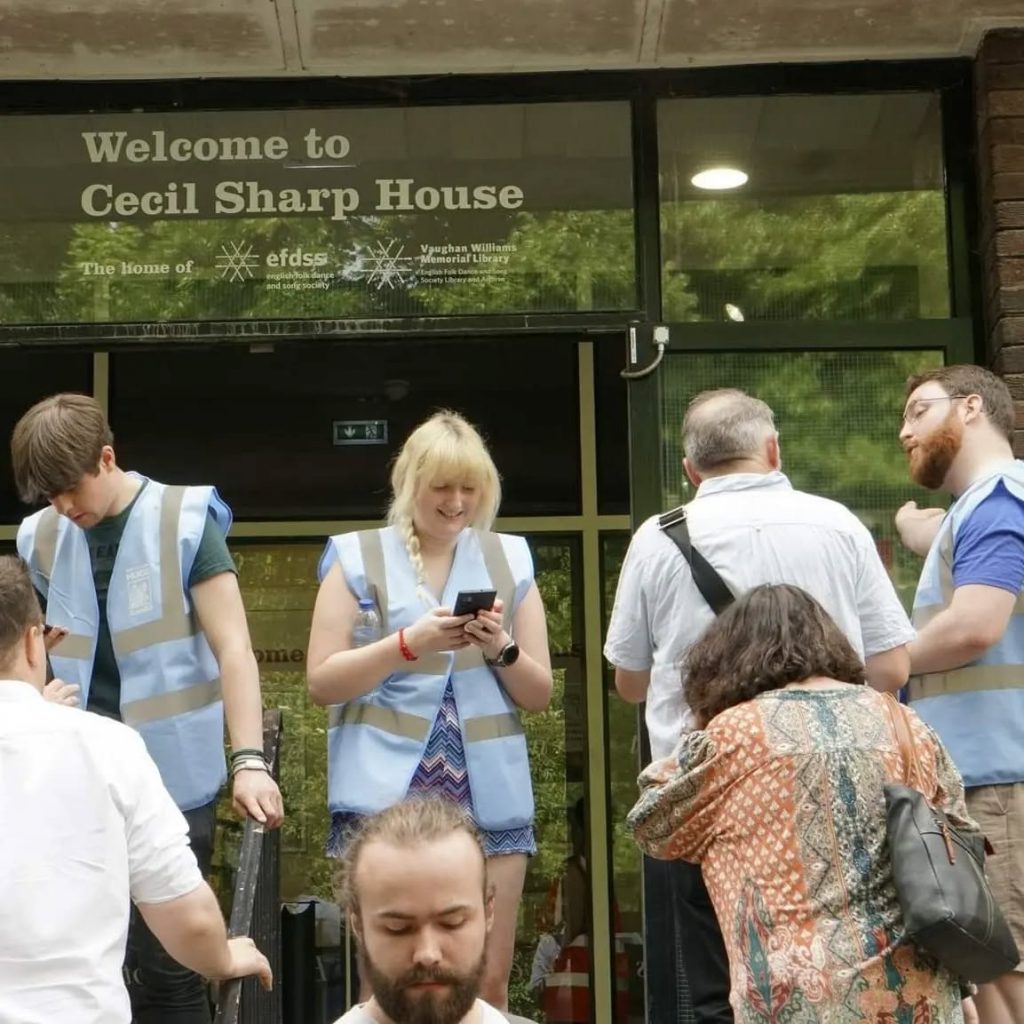
It can also help to look at your Player-to-Facilitator ratio when you think you have your team decided. Ratios can vary by design, from the low-end of 1-2 Facilitators to 30+ players at Den of Wolves, to the high-end of 1 Facilitator per 3-4 players at Everybody Dies. Where your game falls on this scale is likely to depend on how many responsibilities your Facilitator Team has.
How do you cast Facilitators?
As can be seen in the types of Facilitators above, there are a wide range of skills needed in your Facilitator Team. However, there are some traits that are generally needed in everyone you choose to help you run your game:
- Good decision making skills – your Facilitators will often need to make quick decisions with incomplete information. They will need to be able to judge when they can make a call, and when other Facilitators need to be consulted.
- Dedication and reliability – you need to be able to trust that your Facilitators will read and digest any rules or setting material you provide, and that they will turn up and do their best job on the day.
- Confidence – your Facilitators will usually need to be a strong presence in the room, able to give instructions to players with the gravitas required. They will normally need to be okay with some level of public speaking.
- Multitasker – there are normally a number of jobs that Facilitators will need to do at once. For example, responding to a player question while resetting the map for the next turn.
- Some specific skills – your New Player Liaison will need to have empathy, your Mechanics Facilitator will need to have enough of an analytical mindset to fully get to grips with their ruleset, your Plot Facilitator will need to be imaginative.

Unfortunately, for many games, volunteers for Facilitating tend to be on the low end, so you often don’t have a huge amount of choice as to who ends up on your team. But it is still up to you where you cast them as Facilitators, so don’t put your creatives as Mechanic Facilitator, and don’t put someone unapproachable as New Player Liaison.
Casting questionnaires aren’t only useful for casting players – they can also be very helpful when working out where to place your Facilitators.
How do you train Facilitators?
There is a growing trend towards running a training session for Facilitators, to help them fully understand the game and give them the opportunity to ask questions about the mechanics or setting. These can take place in-person, but since many travel for games it can be more effective to run them online.

For this session to be most useful, you should provide your Facilitators with the completed game materials ahead of time, so they can read the rules for themselves and turn up prepared.
It can often be helpful to explain to your team what you foresee the arc of the day being – how you expect events to unfold. Although no game survives contact with the players, this can be a great way to help your Facilitators understand where you intend to go with the game. You will probably also want to talk about the tone of the game – is it light-hearted or serious, wacky or realistic?
It is also a good idea to demo any key mechanics. For larger games and Facilitator teams, it may make sense to hold a general Facilitator briefing that covers key points, and then set up separate times for different types of Facilitators with different responsibilities.
Take some time to think about what you want to convey to your team and how you will explain different parts of the rules. You won’t have a lot of time to communicate with them on the game day, so this prep really is crucial.
What do you call your Facilitator Team?
As mentioned, different groups use different terms to refer to the same team.
Historically, the team was always referred to as the Control Team, and individuals as Map Control, Game Control, etc. But with newer people joining the hobby over the past decade or so, more terms are being used.
In other adjacent hobbies such as tabletop RPG, LARP or escape rooms, the same sort of team are referred to as crew, GMs (gamemasters), marshalls, umpires or storytellers, and you’ll sometimes see these terms used at various megagames. Some designers may choose thematic names that suit the game, with names such as Ship AI or Cabin Hand.
There is an ongoing debate between the two most common terms, Control vs Facilitator. Those who prefer “Facilitators” often see the role as more focused on providing an experience for players, as opposed to managing the game, which is more the perspective of those who prefer “Control”.
How do you reward your Facilitator Team?
Let’s be honest – megagames would not happen without Facilitators. The people who volunteer to help with your game are usually sacrificing playing in your game in order to help you out, though there are some who claim to prefer Facilitating to playing!
So it is important to recognise their contribution, both publicly and personally. Remember to thank them wholeheartedly during your post-game talk (and ideally your pre-game as well!), and you can also mention them in your handbook.
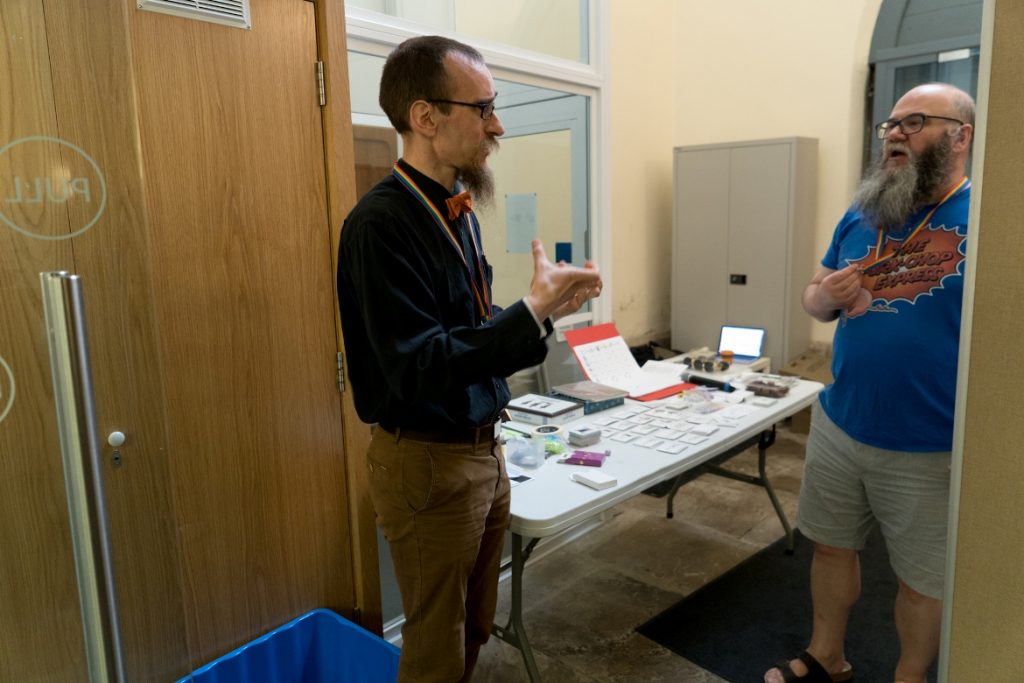
Individually, it might be a good idea to financially reward them – covering their travel costs, buying them drinks or dinner after the game, or sending them a gift voucher.
If your game budget stretches to it, you may consider paying them for their time, but the majority of games do not have the budget to do this and will continue to rely on volunteers. Note that historically, Control were often charged to participate at a reduced rate compared to players, although most groups have now stopped this practice.
How do you recruit Facilitators?
It is a good idea to start recruiting your Facilitator Team before you advertise tickets to players – otherwise, people may sign up to play and be reluctant to make the switch to Facilitating.
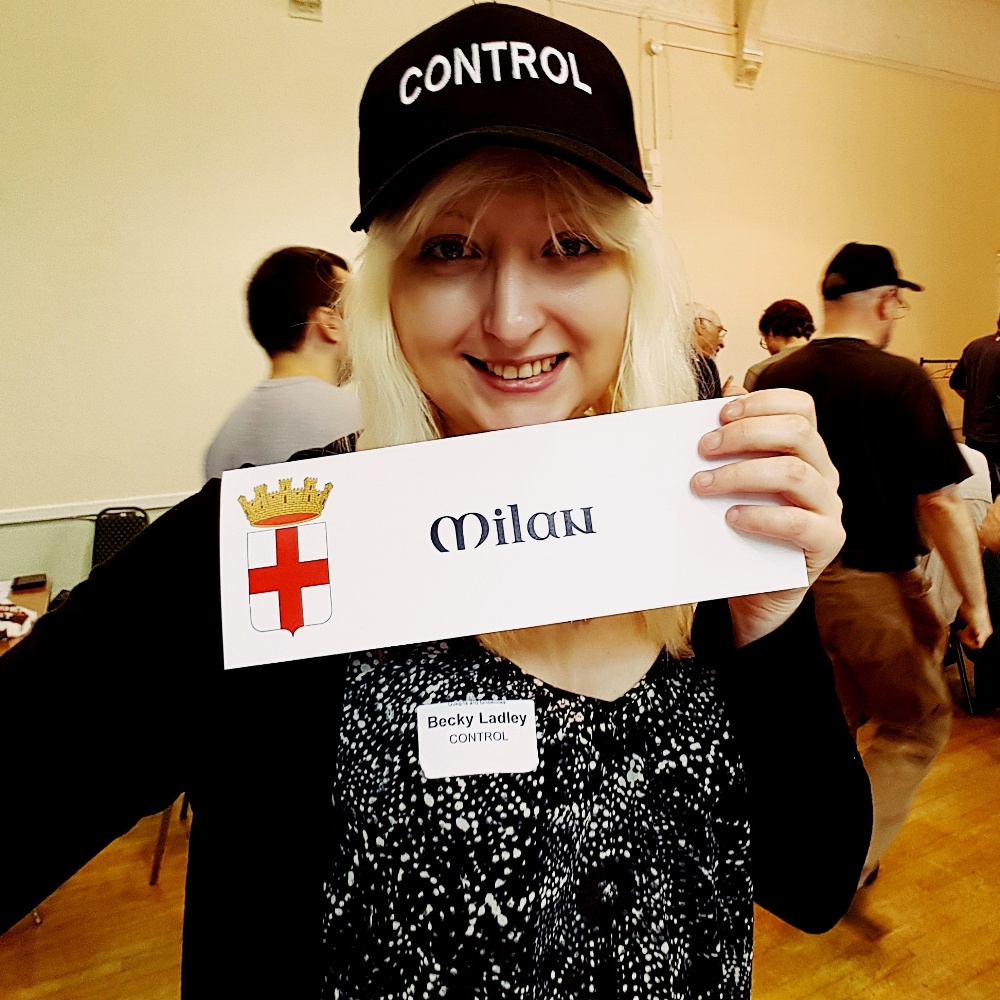
One of the advantages to working with an existing megagame community is that there will be a group of enthusiasts who regularly volunteer for that group to ensure games keep happening. If you are running for a community, this should be your first port of call – though remember that you have the final say on who you have as Facilitators.
Otherwise, reach out to your friends and contacts within megagames, or post on one of the big megagame Facebook groups or Discord servers. These are normally good ways to find volunteers, although if you are an unproven designer or running in a new area, you are more likely to struggle. It may be a good idea to run a game with a lower Facilitator count in these circumstances.
A word on first time Facilitators – it is fantastic to encourage new people to Facilitate, but it might be a good idea to pair them with someone more experienced. For example, if you need two Map Facilitators, have one new and one more experienced.
Summary
Megagames can succeed or fail based on their Facilitators, so this is a crucial part of your game that is considerably more out of your control than a lot of other factors. From choosing how many you will have, to selecting your team and training them up, and then thanking them for their support, there are a lot of decisions to be made.
How do you plan the Facilitator Team at your megagames, and how do you train them and reward them for their crucial help?
Others in the “How to Write a Megagame” series
Part 1: Choosing Your Concept
Part 2: Logistics
Part 3: Scoping
Part 4: Mechanics
Part 5: Briefings
Part 6: Secret Plots
Part 7: Casting
Part 8: Teams
Part 9: Control and Facilitators
Part 10: Venues (coming soon)
